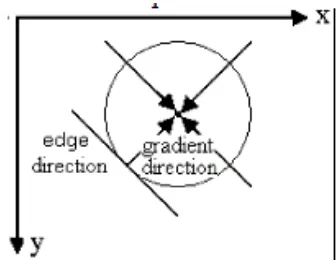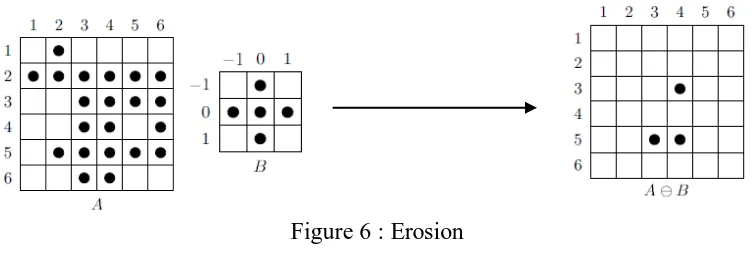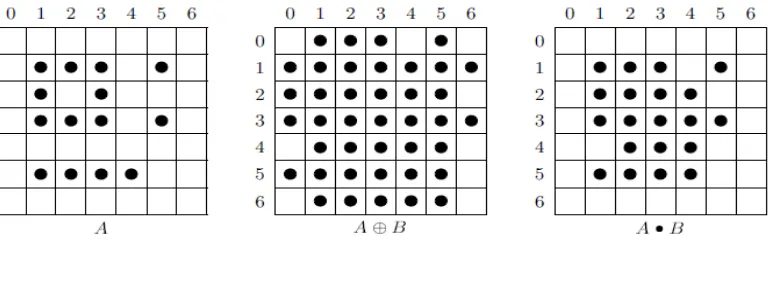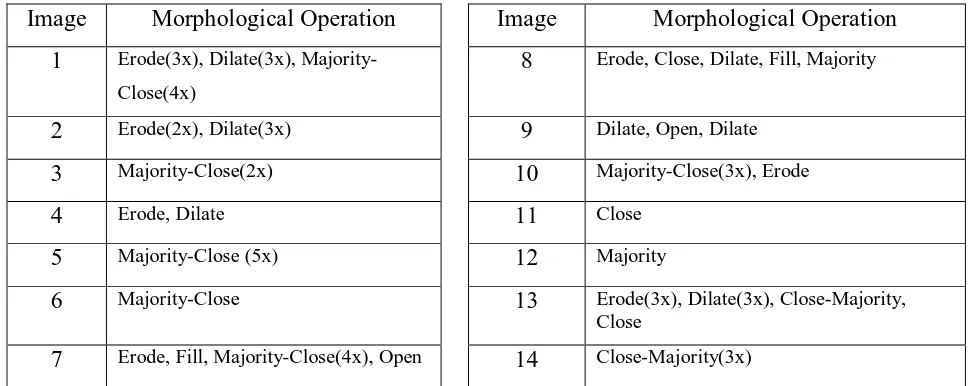“ I hereby declare that I have read through this report entitle “Inhomogenous Color Object Recognition Using Monochromatic Based Technique With Monochrome Camera And Color Filter” and found that it has comply the partial fulfilment for awarding the degree of Bachelor of
Mechatronics Engineering”.
Signature : ...
Supervisor’s Name : NURDIANA BINTI NORDIN@MUSA
2 INHOMOGENOUS COLOR OBJECT RECOGNITION USING MONOCHROMATIC
BASED TECHNIQUE WITH MONOCHROME CAMERA AND COLOR FILTER
FONG KAR WENG
A report submitted in partial fulfilment of the requirements for the degree of Bachelor of Mechatronics Engineering
Faculty of Electrical Engineering
UNIVERSITI TEKNIKAL MALAYSIA MELAKA
I declare that this report entitle “Inhomogenous Color Object Recognition Using Monochromatic Based Technique With Monochrome Camera And Color Filter” is the result of my own research
except as cited in the references. The report has not been accepted for any degree and is not
concurrently submitted in candidature of any other degree.
Signature : ...
Name : FONG KAR WENG
4
ACKNOWLEDGEMENT
Hereby I wish to convey my sincerely gratitude to my supervisor, PN NURDIANA
BINTI NORDIN@MUSA for her upmost guidance and patience along my research pursue on
image processing. Also not forgetting the team member who has been working on this research
together, sharing innovative ideas and being supportive at hard times. The list of team members
is as below:
1. WAN NOR SHELA EZWANE BINTI WAN JUSOH
2. MUHAMMAD FARHAN BIN RAMLI
3. ABDUL RAHMAN BIN ABDUL GHANI
4. NORAIDAH BINTI AHMAD
My caring family has played an important role, being supportive to every decision and
outcome that I had achieve. Besides, fellow course mate has also wonderful and caring and yet
helpful at all times along this research journey. Also not forgetting my closest friend, Cynthia
Ong for her best of every wish and supportive message conveyed to me every now and then.
ALMIGHTY GOD himself has poured down abundant of love and blessing all the time. I wish
ABSTRACT
The project initiated is aimed to recognize color objects varying colors and intensity.
Color image provides additional information to the scene however also contributes to additional
noise. When a color image is scaled down to a gray image, millions of color information data
will be reduced into 256 level of gray, thus significantly reduces the information for the image.
By using a color filter as an aid to enhance the contrast of the object from its background, this
project will present whether the method is capable to make up for the loss of information due to
gray level thresholding. Furthermore, simple monochromatic based recognition techniques can
be applied to the image therefore increases the processing speed. Monochrome camera is used to
take the pictures of the object, with the colors in the image are portrayed as grayscale output. The
intended object is spherical for the experiment, because it has the largest area per perimeter ratio
compared to other shapes, hence better recognition. Successful identification of the spherical
6
ABSTRAK
Projek ini dikajikan atas dasar untuk mengenalkan sesuatu bentuk ataupun rupa dengan
pemprosesan imej dengan memanipulasikan warna dan keamatan cahaya. Warna imej
membekalkan informasi yang mencukupi kepada corak, akan tetapi juga menyumbang kepada
herotan ataupun ‘ bunyi’. Apabila warna imej ditukarkan kepada imej kelabu, berjuta-jutaan data informasi warna telahpun ditukarkan kepada 256 tahap kelabu, oleh itu menyebabkan
kekurangan informasi kepada imej tersebut.Dengan menggunakan penapis warna sebagai alat
membantu bagi meningkatkan objek tersebut di dalam imej tersebut, projek ini akan
mempersembahkan sama ada cara tersebut dapat membekalkan informasi-informasi warna yang
hilang akibat proses ‘ mengelabukan imeg’ Pada masa yang sama, algorithm yang singkat dan
mudah telahpun digunakan dalam pemprosesan imej untuk menyingkatkan masa proses.Kamera
sewarna ataupun hitam putih telahpun digunakan untuk mengambil gambar, dengan warna corak
tersebut ditunjukkan sebagai hitam putih.Objek yang diekperimentkan adalah bulat, disebabkan
ia mempunyai luas permukaan per perimeter yang besar berbanding dengan bentuk yang lain,
dan membolehkan bentuk tersebut dikenalpastikan . Kadar kejayaan untuk mengenalpastikan
TABLE OF CONTENTS
The previous coding on image processing: recognition of circular object with... 12
CHAPTER 1 ... 13
2.2 WAVELENGTH OF COLORS IN A COLOR SPECTRUM ... 16
2.3 RECOGNITION OF CIRCULAR OBJECT ... 17
2.4 GAUSSIAN FILTER ... 19
3.3 Research and review on techniques used by individuals to improve the monochromatic image processing... 28
3.4 Conclude with a hypothesis that the utilization of MATLAB could improve the image processing, together with proper image processing technique ... 28
8
3.5.1 Objective ... 28
3.5.2 Scope ... 29
3.6 Tabulation on the data retrieved from the test. Compare the results and conclude the test ... 31
CHAPTER 4 ... 32
4.1 Results ... 32
4.3 Object radius and Circle centre ... 38
4.4 Conclusion ... 39
CHAPTER 5 ... 40
5.1 Factor of Processing Unit ... 40
5.2 The Lighting Source Angle of Projection ... 41
5.3The Intensity of the Light Source ... 41
CHAPTER 6 ... 42
REFERENCES ... 43
APPENDICES... 47
The previous coding on image processing: recognition of circular object with monochromatic image via MATLAB ... 47
The intended results conducted with via image processing software: Euresys ... 48
Figure 16: The grayscale image after conversion from RGB. ... 48
LISTS OF FIGURES
Figure 1: The color spectrum of a visible light. ... 17
Figure 2 : Illustration of edge direction and gradient direction ... 18
Figure 3 : One dimensional Gaussians ... 19
Figure 4: Morphology operation of dilate of before and after image processing. ... 20
Figure 5 : Dilation ... 21
Figure 6 : Erosion ... 22
Figure 7 : Opening ... 23
Figure 8 : Closing ... 23
Figure 9 : The flow diagram of the project... 25
Figure 10 : K- Chart ... 26
Figure 11 : Time versus filter color (Graythres varied) ... 33
Figure 12 Time versus color filter (StretchLim varied) ... 34
Figure 13 : Time versus Color Filter (Filter Varied) ... 36
10
LISTS OF TABLES
Table 1: The wavelength, frequency and energy of light according to the colors. ... 17
Table 2: Morphological Operation results ... 24
Table 3:Timeline ... 27
Table 4: The table for the image processing data ... 31
Table 5: The initialization value for each variable ... 32
Table 6: Graythres varied tabulated data ... 33
Table 7: StretchLim varied tabulated data... 34
Table 8: Filter varied tabulated data ... 35
ABBREVIATIONS
Etc Etcetera
MaxlgLS Maximum ignorance by least-squares regression
MaxlgWPPLS Maximum ignorance by least-squares regression Preserving the
white point vector
LSAPK Least-squares regression with a priori knowledge
PC Principal components
VMF Vector Median Filter
ISO International Organization of Standardization
CIE International Commission of Illumination
MRI Magnetic Resonance Imaging
12
APPENDICES
The previous coding on image processing: recognition of circular object with
monochromatic image via MATLAB………...………….39
Figure 15 : The original image with matte coated paint ball ... 48
Figure 16: The grayscale image after conversion from RGB. ... 48
Figure 17: The threshold image at level 164 ... 49
Figure 18: Operation dilate on the image ... 49
Figure 19: The sobel (edge finding) operation on the image ... 50
Figure 20: recognition of the circular shape ... 50
Figure 21: The measurement of circular shape... 51
The current MATLAB programming used for recognition and data collecting………...….48
Figure 22: The recognition of the balls ... 52
Data collection on graythres varied tabulation ……….………50
Data collection on StretchLimit varied tabulation……….68
Data collection on Filter varied tabulation ………..……….…….86
CHAPTER 1
INTRODUCTION
1.1 PROBLEM STATEMENT
Color images provide additional information on the scene compared with grayscale
images. However, color images too could contribute to additional noise which will impede the
recognition of the target object in the image. Therefore, it is suggested to convert color image to
grayscale image to reduce noise and speed up the recognition. Furthermore, lesser information is
acquired when grayscale image is adopted hence the consequence is that the simple algorithm
will require more steps to recognize the object. With all respect to the problems highlighted
above, a solution is suggested to solve this problem.
1.2 BACKGROUND
Image processing has been vastly used in many fields, namely the production industries [16],
forensic [13][14], filter production, lens industries and also the medical fields[15]. The demand to
produce an accurate and precise color mixing, intensity, hue, and sharpness together with
optimum resolutions had push the imaging and sensors industries to a higher level of research.
Image processing comes in many different manners, in which different protocol or techniques are
used to process and analyze the image. For example, a color image would involve RGB (Red,
Green, Blue ) sensors to combine the color into complex colors that could be in form of 16 level,
256 level, 13 thousand levels and many more. Therefore, a precise algorithm is required to
carefully sort the information, to extract them into places and also to remove the noise by
methods of filtering the image.
On the other hand, a grayscale image is an image where the value of each pixel in the
14
black at the weakest intensity to white at the strongest [31]. A binary image consists of 2 level of
color, in which it’s either black or white. The conversion of grayscale image to binary is done by computation of interest from image processing software. For example, MATLAB does not
distinguish a binary image and also a grayscale image, where binary image is treated as a special
case of a grayscale image, in which they contains only two intensities[8].Therefore, a simple
algorithm can be utilized to perform any black and white image processing. The importance of
grayscale image processing has been growing rapidly with the emerging urge to implement
vision system into machinery production, also not forgetting the need for accuracy in terms of
bones structures and brain imaging by medical instruments namely X-ray, CT scan and also MRI
(Magnetic Resonance Imaging)[15] .In whole, the research on image processing is right in time to
further improve the method and techniques implemented and proposed to enhance image
qualities.
1.3 OBJECTIVES
The objectives of this project are as below:
To enhance the contrast of the object from its background by means of color filter
To recognize the spherical object from the grayscale image using monochromatic based technique in real time
To reduce the speed of the grayscale object recognition and increase the recognition rate
1.3 SCOPES
The scope of this project is:
Target: Inhomogeneous spherical objects with diameter of 5cm painted with matte paints
separately with three different colors (Red, Green, Blue).
Location: Target is located within (1m or 2 m) from the image sensor
Image acquisition: Monochrome camera with 5MP resolution, 25 mm focal length (put additional info here)
The development and testing of image processing algorithm are done with MATLAB.
The development of graphical user interface (GUI) with either visual basic (VB) or C++.
Assumptions:
o No distortion of the acquired image
o The surface reflection is distributed normally across the image
16
CHAPTER 2
LITERATURE REVIEW
This review is written based on the elements and criteria of the project. Both elements
and criteria are subjected to academic studies report, article and also journal review written by
expertise and also professionals.
2.1 COLORS
Colors is the visual perceptual property, corresponding in humans senses that allows all
healthy individuals to watch and determine the nature so as the complex vision, well bounded in
the human receptor range[17] .Ranged from early development and research till current on colors,
human had invented several instruments to further refine the knowledge on colors, for example
A spectrophotometer measures the spectral reflectance of a color sample[18][19], spectroradiometer
determines the absolute intensity of a light source [19]and densitometer is used to measures the
degree of light through an object or obstacles.
2.2 WAVELENGTH OF COLORS IN A COLOR SPECTRUM
A spectral image is defined as an image where each pixel is represented by a spectrum
[20].Spectral color can be defined as the color that is evoked by a narrow band of light wavelength
in the visible spectrum [21]. These spectral colors are then identified and categorized with a given
name colors, namely red, orange, yellow, violet and many others more, with no clear boundaries
between one color and the next in a color spectrum [21]. In other words, colors that are produced
by visible light of a single wavelength are categorized in the color spectrum. The wavelength of
a certain color in a color spectrum varies in a ranged value. These values are categorized as in
Figure 1: The color spectrum of a visible light.
Color λ (nm) υ (THz) υ b (µm-1) E (eV) E (kJ mol-1)
Red 700 428 1.43 1.77 171
Orange 620 484 1.61 2.00 193
Yellow 580 517 1.72 2.14 206
Green 530 586 1.89 2.34 226
Blue 470 638 2.13 2.64 254
Violet 420 714 2.38 2.95 285
Table 1: The wavelength, frequency and energy of light according to the colors.
2.3 RECOGNITION OF CIRCULAR OBJECT
Renatom. Hadad, Arnalwd E A. Araujo, Paul0 P. Martinjrs [29] proposed that image
recognition of circular object would need to undergo several stages. The preprocessing stage
would enable the image to be read, together with the region of interest (ROI) selected, and
converted to the system. Next, it is then segmented with several proposed method as below:
i) Using algorithms of multispectral segmentation
ii) Segmenting the images separately and to combine them later
18
Next, the images undergo the critical part of the image processing – pattern recognition
where the circular patterns are to be found, and the information is transformed from pictorial to
textual. Lastly, the identification of the image is done by analyzing the textual information
retrieved from previous phase, and a matching is done with the intended model. Hough
transformation is recommended in this paper [29]. LIU Yangxing, GOTO Satoshi, IKENAGA
Takeshi [30] too highly recommended the Hough Transformation technique to perform the
recognition stages on circular object. Initially the image processing undergoes edge detection
using self develops formulae, and then a circular algorithm is performed with Hough
transformation with the general equation of circular is given by:
With the circular pattern recognized, the center and the radius of the circular pattern is
attempted to be calculated.
Figure 2 :Illustration of edge direction and gradient direction
The parametric equation of the circular in polar coordinate is given by:
After collecting all the edge point of the circular object, the true circles in image edge
map can be detected. The Criterion for locating the centre of circle is defined as the accumulator
count must be greater than 2 × π × r × L, where L is a constant, which indicates at what extent the shape as a circle.
In conclusion, the recognition of the circular object would be done by Hough
2.4 GAUSSIAN FILTER
Filter is necessary in image processing to enhance the intended object, at the same time
the filter helps to reduce noise. The idea of a filter can be illustrated where a shape is determined
over the given image. As a result, a new image whose pixels have grey values is calculated from
the grey values under the mask is referred to as filter [8]. Alasdair McAndrew [8] mentioned that a
Gaussian filters are a class of low-pass filters, in which they are all based on the Gaussian
probability distribution function
where σ is the standard deviation, mathematical analyze shows that greater value of σ would yield a flatter curve, while a small value of σ would results in a pointer curve, as illustrated in the
diagram below.
Figure 3 : One dimensional Gaussians
Richard A. Haddad and Ali N. Akansu [22] had an opinion that the Gaussian filters are
categorized as one and two dimensional FIR filters with binary-valued coefficients. In other
words, they can be utilized as a bank of filters, corresponding towards lowpass, band-pass and
high-pass filters. They proposed an algorithm that could speed up the analyzing of an image by
performing an enhanced Gaussian filter method. In application, the proposed binomial filter was
applied in the low pass filter pyramid coding of images, and compared with the ordinary
20
Burt [23] and Burt and Adelson [24] has proposed another type of filters, called the
"hierarchical discrete correlation", capable of performing the low-pass or band pass processor
with Gaussian-alike magnitude frequency response characteristic. This filter has been
implemented in image pyramids. Results from comparing both binomial filter and Burt filter
indicates that binomial performs better than Burt in low pass, however much superior in terms of
computational efficiency and speed [22].
Pei-Yung Hsiao, Shin-Shian Chou, and Feng-Cheng Huang [25] had proposed another way
of filtering with Gaussian. The proposed filter capable of providing various levels of noise
smoothing and reduction, includes the power-of-two approximation arithmetic algorithm for the
Gaussian coefficients that comes together with an effective hardware design, which can be
implemented using simple shifters and adders.
2.5 MORPHOLOGY
Morphology is a branch of image processing, being helpful in analyzing shapes in images
[8]
. Although limited to only grey-scale images, MATLAB has many build-in tools and library
for binary image processing. Among the morphological methodology available in MATLAB is
dilation, erosion, opening and closing. The single use of this method or combinations of these
methods will help to exclude objects that are not circular in nature from the image. For example,
by performing morphological restriction strategy in this project, we are able to distinguish the
ball from other distortion and noise that could affect the outcome of the image. An example is
illustrated as below:
2.5.1 DILATION
Alasdair McAndrew [8]states that dilation can be mathematically describe in such that
Indicating that for every , A is translated by those coordinates, and the union of all the
translation is summed.
Figure 5 : Dilation
In image processing, dilation is used to add pixels at region boundaries or to fill in holes
in the image [26] [27], particularly useful in connecting disjoint pixels and add pixels edges.
However, they encounter disadvantage that dilation would completely closes up or narrow down
holes. Sanaa E. Hanfj, Mohiy M. Hadhoud , & Khaled E. Mustafa [29] shares the similar opinion
that dilation incorporating into the object all the background points that touch it, leaving it larger
in area by that amount.
2.5.2 EROSION
Alasdair McAndrew [8]states that erosion can be mathematically describe in such that
22
By performing erosion onto image, the position is translated depending on the value of
erosion.
Figure 6 : Erosion
The Erosion operation does the opposite operation of dilation. While dilation expands
boundaries and fills holes, erosion reduces boundaries and increases size of holes. The authors
also stress that utilization of dilation can reduce noise [26]. Besides, Erosion eliminates the entire
boundary from an object, thus leaving the object smaller in area by one pixel all around its
perimeter, making it feasible in terms of removing segmented image objects that are too small to
be of interest [29].
2.5.3 OPENING
The opening and closing morphology is a secondary level operation – they are devised
based on the principals of dilation and erosion [8]. Opening operation involves 2 continuous steps
of erosion and then dilation morphology.
The opening operation can be mathematically illustrated in such:
Figure 7 : Opening
2.5.4 CLOSING
In contrast to opening, closing does the opposite; it performs an operation of erosion and
then dilation [8]. It is denoted as:
The closing operation tends to smoothing sections of contours, however fuses narrow breaks and
thin gulfs, filling gaps in contour and eliminates small holes [8][26].
24 2.6 MORPHOLOGY PROCESSING
Nursuriati Jamil , Tengku Mohd Tengku Sembok, & Zainab Abu Bakar [26] has conducted
an experiment to find out the required morphological operation and sequence performed on an
image, ranking them in terms of noise reduction and best possible representation of the actual
value
Image Morphological Operation Image Morphological Operation
1 Erode(3x), Dilate(3x),
Majority-Close(4x)
8 Erode, Close, Dilate, Fill, Majority
2 Erode(2x), Dilate(3x) 9 Dilate, Open, Dilate
3 Majority-Close(2x) 10 Majority-Close(3x), Erode
4 Erode, Dilate 11 Close
5 Majority-Close (5x) 12 Majority
6 Majority-Close 13 Erode(3x), Dilate(3x), Close-Majority,
Close
7 Erode, Fill, Majority-Close(4x), Open 14 Close-Majority(3x)
* Majority - set a pixel to 1 or 0 depending on the majority of its neighborhood pixels.
Table 2: Morphological Operation results
The results shows that close, dilate, majority and erode are the most used morphological
operations in the paper [26]. They suggested that the combination of majority close and
erode-dilate are able to significantly improve their appearance.
Therefore with reference with the results above, I would use the close, dilate, majority







